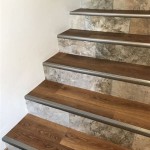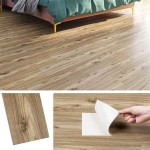Wood Floor to Wood Floor Transitions: A Guide to Seamless Connections
When designing a home, achieving a smooth and cohesive flow between different areas is crucial. This is especially true when transitioning between wood flooring in adjacent rooms. While wood flooring offers a timeless and elegant aesthetic, the transition between different wood types, colors, or directions can pose a challenge. Thankfully, a variety of options exist to seamlessly connect wood floors across various spaces, resulting in a visually pleasing and unified design.
Understanding the Challenges of Wood Floor Transitions
Several factors can make wood floor transitions challenging. One common issue arises when using different wood species, each possessing unique characteristics. For instance, transitioning from a softwood like pine to a hardwood like oak can create a noticeable difference in texture and color, leading to a jarring visual impact. Another challenge arises when dealing with differing wood plank widths or grain patterns. Mismatched widths or differing grain directions can disrupt the visual flow of the flooring, highlighting the transition point rather than blending it in.
Additionally, the presence of existing floor level differences can further complicate the transition. If one room's floor sits at a higher level than the adjacent room, a smooth transition requires careful planning and execution to avoid creating a trip hazard or an aesthetically jarring step. Finally, budget constraints can influence the choice of transition method, as some solutions are more expensive than others.
Popular Wood Floor Transition Methods
Several methods can effectively transition wood floors, each offering unique advantages and drawbacks. The most suitable method depends on the specific project requirements, including the type of wood flooring involved, the level difference between rooms, and budget constraints.
1. T-Molding
T-molding is a simple and cost-effective solution for transitioning between wood floors. It involves using a metal or wood molding shaped like the letter "T" to cover the joint between the two flooring types. The top of the "T" sits flush with the floor, while the bottom leg extends down to the subfloor, providing a clean and defined edge. T-molding works best for transitions with minimal or no level difference. It is available in various styles and finishes to match existing wood floors. However, T-molding can be susceptible to scratches and dents, and its appearance may not be as seamless as other methods.
2. Reducer Molding
Reducer molding is ideal for transitioning between floors with a slight height difference, typically less than ½ inch. It features a sloped profile that gradually reduces the height from one floor level to the other. Reducer molding comes in various materials, including wood, vinyl, and metal, and can be matched to the existing flooring. It offers a smooth and gradual transition while maintaining a clean and defined edge. However, reducer molding may not be suitable for significant level differences.
3. Threshold Molding
Threshold molding provides a sturdy and durable transition for areas with a noticeable level difference, often exceeding ½ inch. It features a raised profile that covers the gap between the floors while providing a step-up or step-down effect. Threshold molding is available in various materials, including wood, metal, and composite, and is often designed to match the existing flooring. While offering a robust and reliable solution for level differences, threshold molding can create a more noticeable transition compared to other methods.
4. Flush Transition
For the most seamless and visually integrated transition, a flush transition is highly sought after. This method involves installing the flooring so that it meets at a single level, creating a continuous surface without any visible join. This is typically achieved by adjusting the subfloor level in the lower area. While flush transitions offer a sleek and modern finish, they are more complex and labor-intensive to install.
Choosing the Right Transition Method
Selecting the most appropriate wood floor transition method requires careful consideration of several factors. The type of wood flooring, the level difference between rooms, the budget, and personal preferences all play a role in determining the best solution. It is recommended to consult with a qualified flooring specialist or contractor for advice on the optimal approach for your specific project.

How To Make Your Own Wood Floor Transition Strips Youtube

Building A Custom Floor Transition Threshold Kraftmade Youtube

Transition Between Old Wood Floors And New Hardwoods With A Strip

Guide To Flooring Transitions

Tile Transition Strips To Hardwood Floor

How To Transition Your Wood Floors Between Rooms Artisan Llc

9 Transition From Old To New Wood Floors Ideas Flooring Hardwood

5 Methods To Transition Between Two Different Wood Floors Home Briefings

Lvp To Wood Transition

Stylish Wood Flooring Transitions For 2024 Forté







